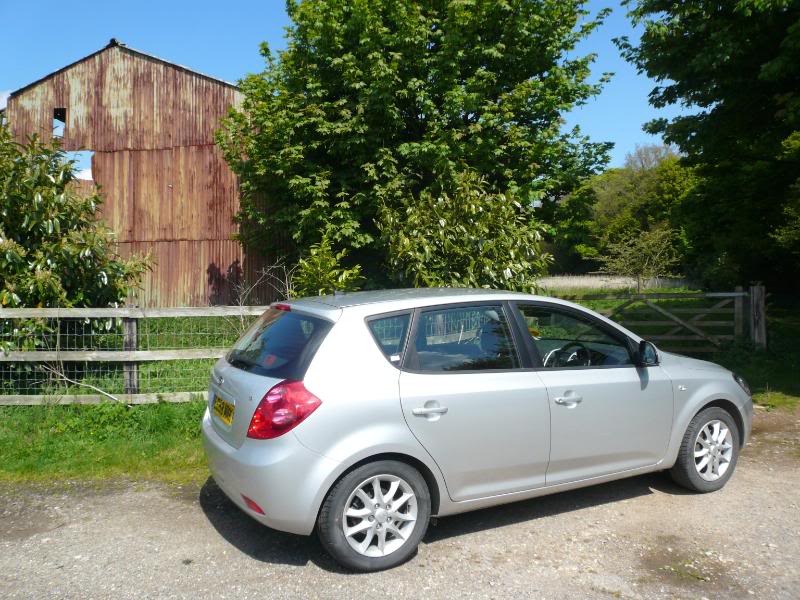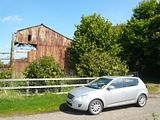
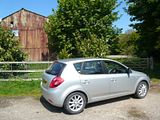
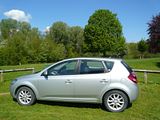
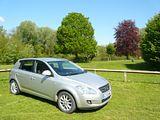
It’s less than 20 years since the first Kia cars made their appearance in Europe. The first offerings were literally recycled previous generation Mazdas that were not even that good when they were the original Mazda 121, but a staggering array of new models has poured out of Korea ever since. Standards continued to improve and by the time that the 2001/2 models appeared, the cars were actually pretty reasonable, and started to command a certain success in filling the gap once occupied by the Japanese, namely in providing a satisfying ownership experience with a value for money proposition that, while not in any way exciting, had no serious faults. Yet, still the luke warm road tests appeared, and badge snobbery ruled supreme. I still come across many Americans who tell you that they refuse to drive these cars as they are complete rubbish, and insist that the US domestic product is superior. The experience of putting their cars into selected rental fleets did not seem to work, then, despite the general worthiness of products like the Sorento and even (dare I admit it?), the Magentis/Optima V6 models, so the execs at Kia Motors must have been wondering just what it is they have to do, to persuade people to take them seriously. Enter the Cee’d. The first Kia to get truly excellent reviews from Western European motoring journalists who found much to like in this car, produced in Slovakia. May be it is the fact that it is produced in Europe that has finally persuaded them to take it seriously. I had a certain amount of ridicule and disbelief offered to me when I actually liked the Rondo (Carens in Europe) that I recently sampled, so perhaps readers here will take the Cee’d (once they get over that daft name) more seriously.
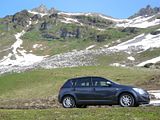
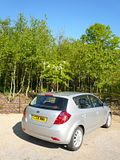

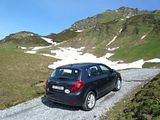
My Swiss test car, a 1.6 petrol engined “Trend” model was parked up next to a Toyota Auris, and it took me precisely no time at all to decide that it beats the Toyota on looks. Whereas the last model Corolla was quite tidily, if rather blandly styled, the Auris looks fussy, awkward and even a bit gawky from some angles, as if it is trying too hard. And that’s only the outside. The inside is worse. Now, the Cee’d will never win prizes for its outright beauty – we’ll leave those accolades to the Italians for this class of car – but it is pleasingly neat and uncontroversial to look at. Not fussy for sure, but a harmonious design. The same could be said of the interior, which is very well designed. To relieve the potential tedium of an all black dashboard, there are silver outer panels to the central part of the dashboard and lighter coloured lower panels to the door trims which lift what could otherwise almost be a funereal sombre experience. The dash itself was finished with a slightly unusual texture, but it is light years ahead of the very hard shiny plastic look that used to characterise all cars at the cheaper end of the market, especially the Koreans. The fit and finish was exemplary, with quality mouldings, and everything fitting nicely together. One other interesting touch: the key. When I was given it, I actually thought I had perhaps been given an Audi, as the key and fob are all but identical. A small touch, perhaps, but symptomatic of the sort of detail that is required to persuade people that these cars are better than the bargain basement.
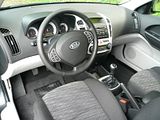
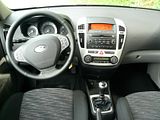
So, with visual inspection over, it was time to get in, get comfortable and see how the car drives. Getting comfortable was easy, with a manual fore and aft adjusting bar under the seat, and a nice continuously adjustable backrest rake adjuster on the side of the seat along with a column that adjusts for height and in and out. The seats were then subjected to a day, and 425 km of test drive, and proved nicely supportive and a very agreeable place to spend time. The side part of the seat is covered with a hard-ish feeling cloth that is not quite as unpleasant as that typically found in cars of this class, but the centre section, in a restrained black-based pattern was rather better than you typically get in entry level models such as this was. The driving position then proved to be spot on, with all the controls falling readily to hand, and perfectly positioned. Unlike the Focus, which seems to think it is OK to do without a foot rest, there was a very large moulded foot rest to the left of the clutch pedal, which I found welcome. The dash itself is simple, and clear, and above all totally intuitive. Steering wheel mounted controls to adjust various facets of the excellent quality stereo system are beautifully integrated (again, Ford, take note!). the stereo itself, was of good quality, and with simple clear buttons. Above it is a large digital display unit, showing day, time, selected radio channel, ambient temperature, and with other functions easily selected. It was a warm and sticky day when I tested the Cee’d. so I was grateful for the fact that the air con was efficient and effective at getting the temperature of the car to that which I wanted. One small gripe, though, is that the central air vent is mounted right behind the driver’s right hand (in this left hand drive car), and was quite capable of chilling my knuckles. Just like every recent Toyota, then!
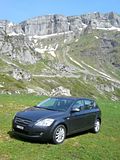
These days, a 1.6 petrol engine is going to struggle a little with a car of this size and weight. And yes, it would be true to say that the Cee’d never felt particularly fast, and – perhaps spoiled by being used to the torque of mid-sized diesels – the engine could definitely do with more mid-range urge. Motoring up and down the steep Alpine passes, l did find the Cee’d ran out of momentum, and I needed to change down a bit earlier than perhaps I would have expected. No particular hardship given the excellence of the five speed gearbox which had a very precise change. Less clunky than the Focus, but still admirably precise, and with a particularly easy feel to engaging reverse – something that still eludes some VAG boxes, for instance. All the Alpine work did not seem to harm economy, though. The test car was brand new – it had just 15km on the odometer when I got it – so I am pretty sure that it was truly full of fuel when I collected it. The 425km test required just 30 litres of fuel to refill it, which amounts to a very impressive 40.25 mpg, which considering how hard the car had to work on the Klausen Pass, is pleasing. Although the Focus definitely has the edge on steering and handling, the Cee’d is not a bad effort, and is definitely a big improvement on previous Korean cars in this area. What’s more, this seems to have been achieved at no cost to the ride, which proved good on all the surfaces to which it was subjected, which included cobbles at the eastern side of the Klausen pass. No issues with the brakes either, which proved well up to the job, and I was delighted to find a proper, traditional, pull up handbrake in the centre of the car, which did not seem to preclude the provision of a decent sized two level cubby and armrest. Who says that the electronic handbrake is needed to free up this space?
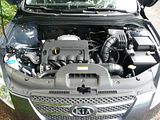
As a family car, the Cee’d is well up to par, too. There is ample space in the rear of the car, with three proper seat belts, and plenty of shoulder room for three adults to sit in there.
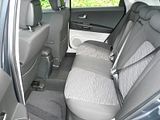
There is a decent sized boot, and this can be extended by folding the rear seats onto the space vacated by lifting up and sliding forward the rear seat cushions. Inside the car, the door bins are complemented with the aforementioned under armrest cubby, and useful camera-sized holder in front of the gearlever, and a generous glove box. There were doubtless some cupholders somewhere as well!
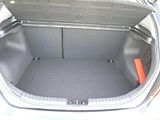
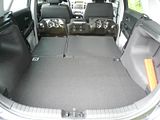
So, we get to the end of the assessment, and there is little to criticise. And certainly nothing that is a serious weakness. The Focus probably does edge it as a driver’s car. But the Kia’s trump card is the ownership proposition – with that generous warranty, and likely reliability proposition, about the only thing that will stop people buying it in droves will be the badge. More fool them! They’re missing out on a very competent family hatch.
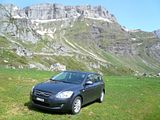
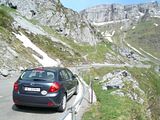
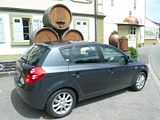
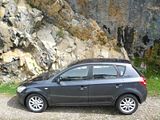
A subsequent test of a right hand drive model, where the equivalent trim level is badged “LS” gave me no cause to change any of my assessment of the Cee’d. It acquitted itself just as well on English roads as it had done on Swiss ones. Hertz UK are still struggling to persuade many of their customers to try the car, but told me that those who do are usually pleasantly surprised and return the car favourably impressed. It clearly takes a long time to build a brand image.



















